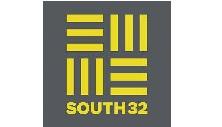Description of ENAP’s Scope:
Engineering Applications (ENAP) was engaged by Graincorp to supply and replace the 2.7m diameter slew bearing on the shiploader at the Fisherman’s Island Grain Terminal at the Port of Brisbane. The shiploader had been in operation for more than 30 years, when an extreme weather event with, strong gale force winds of up to 159km/hr, caused damage to the slew ring and pinion drive gears in November 2016.
A key part of the project was to develop an engineered methodology to hydraulically jack the superstructure of the shiploader to provide enough clearance between the lower and upper bearing pads to allow the removal of the existing bearing and installation of the new bearing. The superstructure had to be safely supported to allow for high winds during the two-week replacement window. Members of ENAP’s Design and Project’s teams developed an engineered methodology to hydraulically jack both the upper superstructure and shiploader boom simultaneously. This included detailed analysis of the loads of the shiploader, through a custom designed jacking support structure, onto to the wharf through temporary supports. The methodology was critically reviewed and approved by the client’s third-party engineer and representatives of the Port of Brisbane.
ENAP’s scope included the procurement of key mechanical equipment with long lead times, including:
- Rothe Erde Slew Bearing (2693mm diameter weighing 2.55t) manufactured in Germany with strict quality requirements and freight to Brisbane, Australia
- Hagglund Hydraulic Drives
- Slew Pinion Gears and Shafts
Preparation works were completed during the delivery of long lead items, which was completed outside ship-loading activities for the site. This included fabrication and site welding of additional support and stiffeners in the lower superstructure for the jacking loads. Multiple lifting beams were required, along with additional support points for the removal and installation process. ENAP’s scope also included the design, fabrication, and installation of new cable ladder access platform at the top of the shiploader.
ENAP completed detailed shutdown planning, including preparation of a Safety Management Plan, removal and installation methodology, and shutdown schedules. The installation works were completed over a two-week shutdown with an experienced installation team working to the detailed methodology. The existing hydraulic drives and shafts housings were rigged and lowered to the wharf, then transported to ENAP Workshop for rebuilding with new mechanical components.
The synchronous hydraulic jacking system was setup and tested for operation. Four jacks were positioned under the upper superstructure and two jacks under the temporary boom support structure. The jacking system had linear encoders and pressure sensors to continuously monitor the Centre of Gravity during the raising and lowering of the structure. The superstructure was then raised with the existing slew bearing allowing the installation of slide plates below the bearing. The structure was then lowered down for the bearing to contact on the plates for it to be unbolted from the upper structure. The upper structure was then lifted back up, allowing clearance for the slew bearing to slide out of its position and be lowered to the wharf. The upper and lower bearings surfaces of the structure were then cleaned, inspected and accepted by the client as suitable for the new bearing to be installed.
The new slew bearing was rigged and hoisted from the wharf and transferred to the slew deck. The slew bearing was carefully orientated and moved into position on the slide plates. The hydraulic jacking system was used to raise and lower the superstructure to allow the slew bearing located correctly. This allowed the installation of M24 Gr 10.9 fasteners to the inner and outer bearing races. Once all located, the superstructure was then lower back into its operating position.
The final part of the slew bearing installation was the completion of a series of quality checks and inspections. The 112 fasteners were tensioned in a three-part process, with final tightening torque completed to specification using a calibrated hydraulic torque wrench. Each step was documented and marked following the quality inspection and test plan, which was witnessed by the client’s engineer.
The hydraulic drives, refurbished shaft housings and new slew pinion gears were installed, allowing the ship loader to be successfully commissioned on schedule at the end of the shutdown window. The project was completed safely, on time, within the client’s budget and with a high standard of workmanship.
Highlights and Achievements:
- Detailed and comprehensive engineering removal and installation methodology, including temporary supports for hydraulic jacking
- Detailed shutdown planning works to coordinate safe and scheduled slew bearing replacement on critical equipment for the site
- Complex removal and installation activity for critical mechanical equipment
- Comprehensive quality checks as part of completion of installation of new slew bearing












































